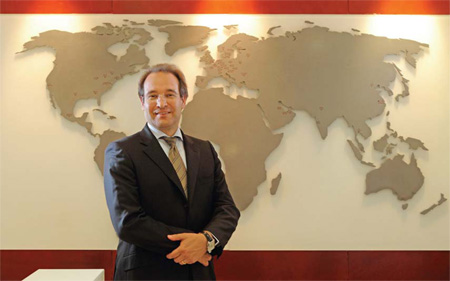Research in motion
Updated: 2011-11-11 09:02
By Andrew Moody (China Daily)
|
|||||||||
|
Bernhard Hartmann of AT Kearney says multinationals setting up R&D centers in China has become a big trend. [Gao Erqiang / China Daily] |
Bernhard Hartmann, managing director of international management consultants AT Kearney in China who is based in Shanghai, says when he gives a presentation to a global board of a company he always give the same advice in relation to IP.
"What I would recommend to a client is for them to have one lab in the US, one in Europe and one in China but that they should not work on their most revolutionary topics in China. It is just a down to earth recommendation that I have," he says.
Chuang from Alcatel-Lucent Shanghai Bell was on a visit to the company's research and development base at the Wangjing Science and Technology Park in Beijing.
The company itself is a product of a number of mergers but owes its origins back to Alexander Graham Bell who invented the telephone in the 19th century when China was very much in a technological dark age.
It employs no fewer than 5,200 engineers at research bases throughout China, 35 percent of who are under 30 and 96 percent under 40. The average age is 32.
"The average age is low-30s compared with our research and development centers outside of China where it is low-40s or mid-40s. It doesnt mean, however, it will take 10 years to catch up with that experience since we can do it quicker through project participation."
Chuang says one of the key advantages of being in China is proximity to the production process to develop products for the local market.
"We can be close to our manufacturing facilities and supply chains so the results of our research and development can go straight into manufacturing without having to go back and forth between here and the United States."
Hartmann at AT Kearney in China, who has a close knowledge of research in the chemicals sector, says foreign multinationals setting up R&D centers in China has become a big trend.
"You have companies like Bayer investing massively and building a research and development center in Shanghai, you have Merck opening a big lab in Beijing, so too AkzoNobel. Instead of companies having no real R&D here five or 10 years ago, now they have 10 to 15 percent of their worldwide spend here.
"What is happening with the big global companies is that instead of having their Asia lab in Singapore they now want to have it in Shanghai."
One company that has invested heavily in R&D in China is GE.
It has had research facilities in China since 2000 and now has 1,500 of it global 2,800 research staff here.












